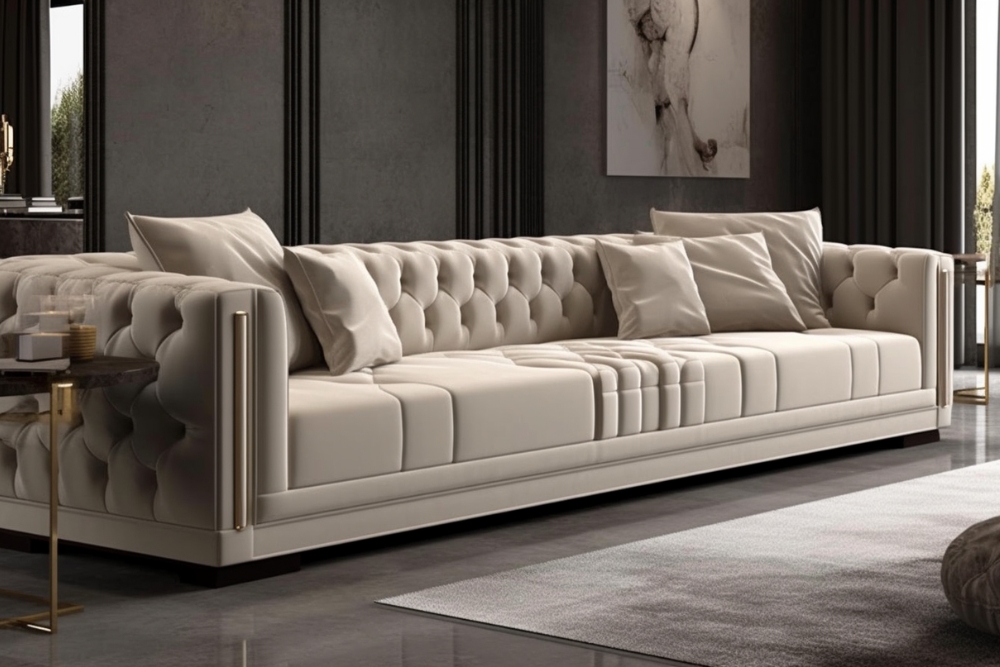Choosing the Ideal Sofa for Your Living Room
Selecting the right sofa can transform your living room — combining comfort, style, and longevity. This guide walks you through measuring your space, comparing upholstery options, matching your décor, understanding price versus quality, and caring for your investment. Learn how to pick a sofa that fits your lifestyle, looks great, and lasts for years with practical tips on materials, dimensions, and maintenance.

Key considerations before you buy
Start by mapping your living room. Measure the area where the sofa will sit, note doorways, hallways and elevator access for delivery, and check stair widths if needed. A sofa should feel proportional to the room: too large will overwhelm the space, too small will make the layout look disjointed. In addition to overall width and height, evaluate seat depth and seat height to make sure the sofa suits the people who will use it most — shallow seats work well for upright sitters, while deeper seats are ideal for lounging.
Think about traffic flow and how the sofa will interact with other furniture. Leave enough space for easy movement around the piece and ensure sightlines to focal points such as a TV or fireplace remain unobstructed. If you’ll be moving the sofa often or need flexible seating, consider modular or sectional options that can be reconfigured.
Upholstery choices and durability
Upholstery material greatly influences a sofa’s look, feel, and lifespan. Popular choices include performance fabrics, leather, velvet, and linen, each with distinct advantages:
- Performance fabrics: Engineered for heavy use, stain resistance, and easy cleaning. These are especially practical in homes with children or pets.
- Leather: Known for durability and a timeless appearance. Genuine leather ages well and can be easier to wipe clean, though it can scratch and may require occasional conditioning.
- Velvet: Offers a luxurious texture and depth of color. Velvet suits more formal or refined interiors but can show wear faster in very high-traffic spots.
- Linen: Breathable and casual, linen gives a relaxed, natural vibe. It can wrinkle more easily and may need more careful maintenance to prevent stains.
When evaluating frames and cushions, look for hardwood frames and corner-blocked joints for long-term stability. High-resilience foam or down-wrapped cushions affect comfort and how cushions recover after use. Consider removable cushion covers if you want an easier cleaning routine or the option to switch fabrics later.
Styling and visual harmony
Your sofa should support the room’s aesthetic. Neutral tones provide flexibility and longevity — they blend with many styles and allow you to change accessories without replacing the sofa. If you prefer a focal statement, pick a bold color or patterned fabric that complements the room’s palette. Mix patterns with restraint: combine a solid base with accent pillows in different scales of pattern to create balance.
Match the sofa’s silhouette to the architecture and furnishings. Clean-lined sofas pair well with modern interiors, while rolled arms or tufting suit more traditional rooms. Eclectic spaces can benefit from unexpected shapes or colors that tie into existing décor elements. Think about leg finishes and visible details as these contribute to the overall impression.
Price tiers and what to expect
| Quality Level | Price Range | Expected Lifespan | Features |
|---|---|---|---|
| Entry-Level | $500-$1,000 | 3-5 years | Basic construction, limited fabric choices |
| Mid-Range | $1,000-$3,000 | 5-10 years | Better materials, multiple style options |
| Premium | $3,000-$5,000+ | 10+ years | Premium materials, customization available |
Prices, rates, or cost estimates mentioned in this article are based on the latest available information but may change over time. Independent research is advised before making financial decisions.
When budgeting, remember that a higher price often reflects better materials, superior craftsmanship, and the option to customize. Entry-level sofas can be fine for temporary needs or low-use rooms. Mid-range options generally balance quality and affordability for everyday living. Premium sofas are investments intended to last many years and may include customizable sizes, fabrics, and construction upgrades.
Care and maintenance to extend lifespan
Routine care keeps a sofa looking fresh and lasting longer. Vacuum fabric upholstery regularly to remove dust and grit that can wear fibers. Attend to spills immediately: blot liquids with a clean cloth and follow the manufacturer’s cleaning instructions for your specific fabric. For leather, wipe with a damp cloth and apply a recommended conditioner periodically to prevent drying.
Rotate removable cushions and flip them if the design allows, to distribute wear evenly. Consider professional deep cleaning once a year, especially for high-use pieces. Use cleaning products appropriate to the material — avoid harsh chemicals on delicate fabrics and test any cleaner on an inconspicuous area first. Protect upholstery from prolonged direct sunlight to reduce fading and material degradation.
Final thoughts
Choosing a sofa is a blend of measurement, material knowledge, design sense, and realistic budgeting. Take time to try different seat depths and styles in-store when possible, and request fabric swatches to test color and texture at home. Factor in who will use the sofa, how often, and whether pets or children will be present. With thoughtful selection and regular care, the right sofa will provide comfort, anchor your living room design, and remain a dependable piece of furniture for years to come.






